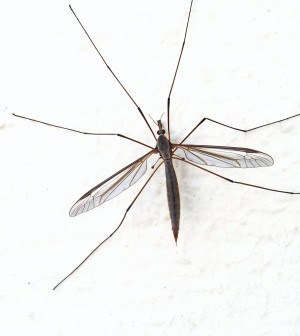- Navigating Your Midlife Crisis: Embracing New Possibilities
- City Raccoons Showing Signs of Domestication
- Mapping the Exposome: Science Broadens Focus to Environmental Disease Triggers
- One Week Less on Social Media Linked to Better Mental Health
- Your Brain Changes in Stages as You Age, Study Finds
- Some Suicide Victims Show No Typical Warning Signs, Study Finds
- ByHeart Formula Faces Lawsuits After Babies Sickened With Botulism
- Switch to Vegan Diet Could Cut Your Greenhouse Gas Emissions in Half
- Regular Bedtime Does Wonders for Blood Pressure
- Dining Alone Could Mean Worse Nutrition for Seniors
Ick! Tapeworm Infecting Man’s Brain Yields Genetic Secrets


Scientists say they’ve mapped the genome — the genetic “blueprint” — of a tapeworm extracted from a British man’s brain, in hopes it might help others with this very rare infection.
As reported Nov. 21 in the journal Genome Biology, the tapeworm was removed from the brain of a 50-year-old British man of Chinese ethnicity.
“This infection is so rare worldwide and completely unexpected in this country that the patient was not diagnosed … until the worm was pulled out from the brain,” study lead author Hayley Bennett, of the Wellcome Trust Sanger Institute in the United Kingdom, said in a journal news release.
As the researchers explained, most tapeworms live in the gut, causing symptoms such as weight loss, weakness and abdominal pain. However, some species travel to areas such as the eyes, spinal cord and brain.
In this study, researchers sequenced the genome of a 1-centimeter larval tapeworm removed from the man’s brain. He had been complaining of symptoms such as headaches, seizures, altered smell and memory problems. The man survived the surgery and is recovering, Bennett’s team said.
Through sequencing the tapeworm’s genome, researchers identified it as a rare species called Spirometra erinaceieuropaei, typically found in China, Japan, South Korea and Thailand. Infection can occur when a person eats undercooked frogs or snakes, uses frog meat for treating wounds, or drinks contaminated water.
The researchers believe the gene study might lead to improved drug treatment for people with the parasite. By sequencing the tapeworm’s genome, they pinpointed genes that provide resistance to a drug called benzimidazole, and other genes that suggest a possible sensitivity to another tapeworm drug, praziquantel.
The researchers also identified a number of genes that may offer targets for drugs that are already on the market but used to treat other conditions.
“We were also surprised at how large the genome was; it is much bigger than those of other known flatworms, and roughly a third of the size of the human genome,” Bennett said.
“By comparing the genome to other tapeworms we can see that certain gene families are expanded — these possibly underpin this worm’s success in a large variety of host species,” she added. “The data gave us a first look at a whole group of tapeworms that have not been sequenced before.”
More information
The Encyclopedia of Life has more about tapeworms.
Source: HealthDay
Copyright © 2025 HealthDay. All rights reserved.










